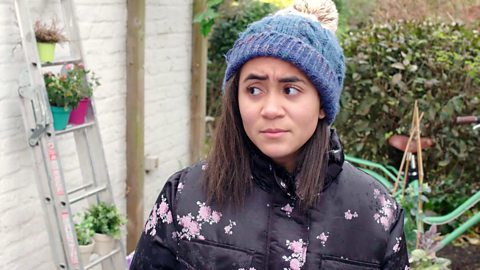Posey: Stop it Ivy!
Ivy: Well, these pests are bothering my lovely flowers!
Posey: They're pollinating them! It's important.
Ivy: Are you sure? It looks like they're just headbutting them.
Posey: That's because the flowers are attracting insects as they're an important part of making new plants. The smell from the nectaries and the prettiness of the petals draws the insects in towards them. As they dig for the sweet nectar all the pollen rubs off on their bodies from the stamen. The nectaries are right at the bottom to make sure this happens. Once the little bee has had her fill she'll fly off to find more nectar.
Ivy: Greedy
Posey: When the bee digs into the next flower the pollen on her body rubs off onto the stigma of the new flower. This is called pollination. When the pollen lands on the stigma it travels down the style towards the ovary. Once the pollen reaches the ovary it hopes to find an ovule to attach to. This is called fertilisation. This is the beginning of a new seed. It is absorbed into the receptacle and fruit starts to form from the seed. It is called sexual reproduction. When the fruit is ready, the plants release the seeds which get moved into the soil.
Ivy: How does that happen?
Posey: In a few different ways. Seeds can be blown by the wind, or eaten by animals and then pooped out in a different place.
Ivy: Pooped?!
Posey: They can explode and scatter themselves, float on water, fall from flowers and trees and they can also stick to animals' fur and be moved. Once they are dispersed in the soil they can create new plants. So what were all the ways?
Ivy: Blow, Eat, Explode, Fall, Float and Stick. B.E.E.F.F.S! See, I do listen!
Posey: Well if you've really been listening. How does pollination work?
Ivy: Oh, i'll explain. Through the medium of song… Climb into the flower to get the sweet nectar, rub past the pollen on the way out, to another flower to get the sweet nectar, rub it on the stigma that's what it's about. Busy bees, doing their thing Busy bees, pollinating. Pollen travels down the style, gets to an ovule. Makes a seed. That's fertilising. Seed gets moved away, and is replanted. Makes a new plant and it happens again. Busy bees, doing their thing, busy Bees, pollinating.
Ivy: Posey- what are you doing?
Posey: That's amazing. Can I put it on Youtube?
Ivy: Youtube… Yeah, put it on my channel.
Posey: Aunt Ivy, there are some plants which can reproduce…
Ivy: Reproduce?
Posey: Make baby plants - on their own. This is called asexual reproduction. For example, a strawberry plant can reproduce when its stems, called runners, are replanted in new soil. This will start a new plant.
Ivy: So it can create new plants on its own? You're exploding my mind.
Posey: Exactly.
Video summary
This film explores the process of pollination and the roles different parts of a plant play.
The process is summarised at the end though a song.
This is from the series: Ivy's Plant Shop.
Teacher Notes
This film could be used as an introduction to plants and reproduction.
Pupils could write a non-fiction report on plant reproduction or the process of pollination.
Working in pairs, they could create a series of cards depicting pollination, which their partner then has to sequence.
This film will be relevant for teaching Science/Biology at Key Stage 1 and Key Stage 2 in England, Wales and Early and 1st and 2nd Level in Scotland.
Also at Foundation, KS1 and KS2 in Northern Ireland.
What do plants need to survive? video
A film looking at what plants need in order to survive.
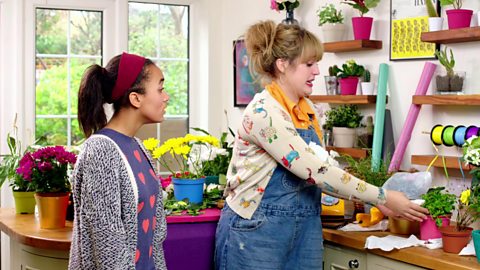
The anatomy of the flower. video
A film looking at the various parts and functions of flowers.
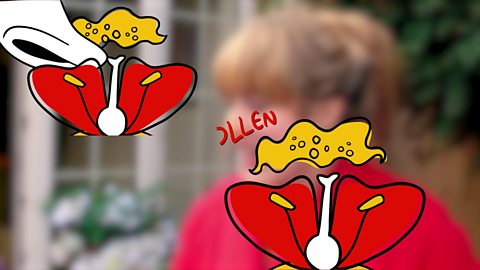
Parts of a plant. video
A film looking at the various parts of a plant and their functions.
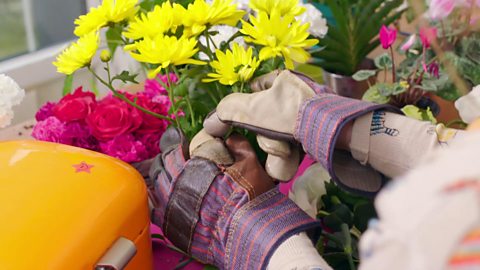
How does water get from the roots to the leaves of a plant? video
A film looking at how water travels through a plant from the roots to the leaves.
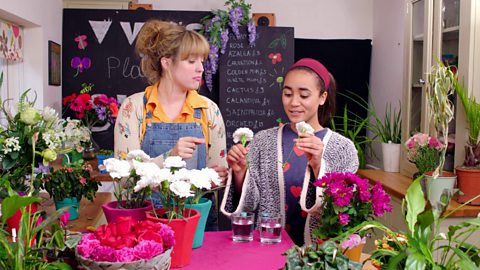
Classifying and grouping plants. video
A film looking at different ways of classifying and grouping plants.
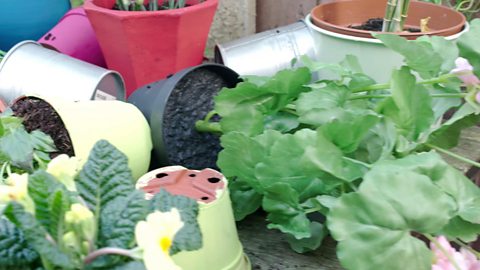
Grouping living things. video
A film looking at different ways of classifying and grouping living things.
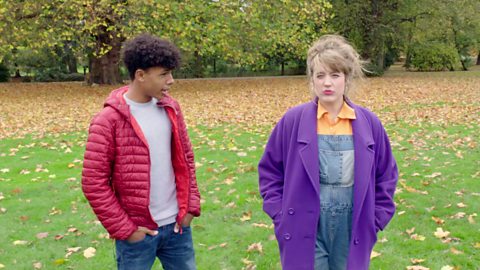
Are plants the same all year round? video
A film looking at how plants adapt in order to deal with the different seasons of the year.
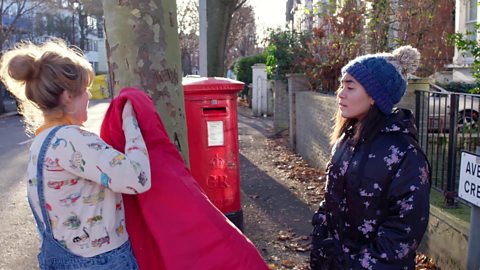
The impact deforestation has on plants and nature. video
A film looking at the impact deforestation has on plants and nature.
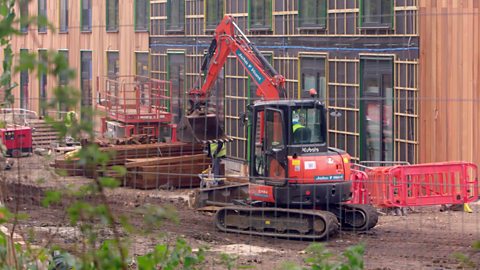
How can we protect plants and nature? video
A film looking at the ways we can all protect plants and nature.
